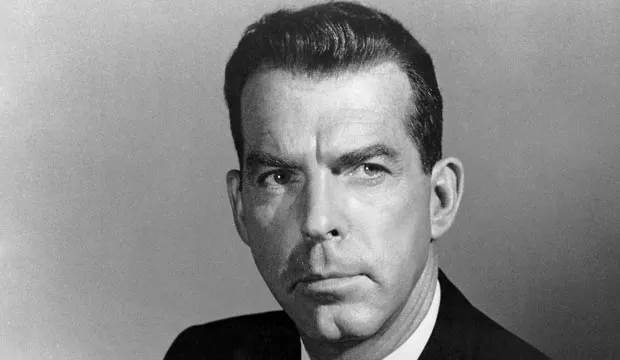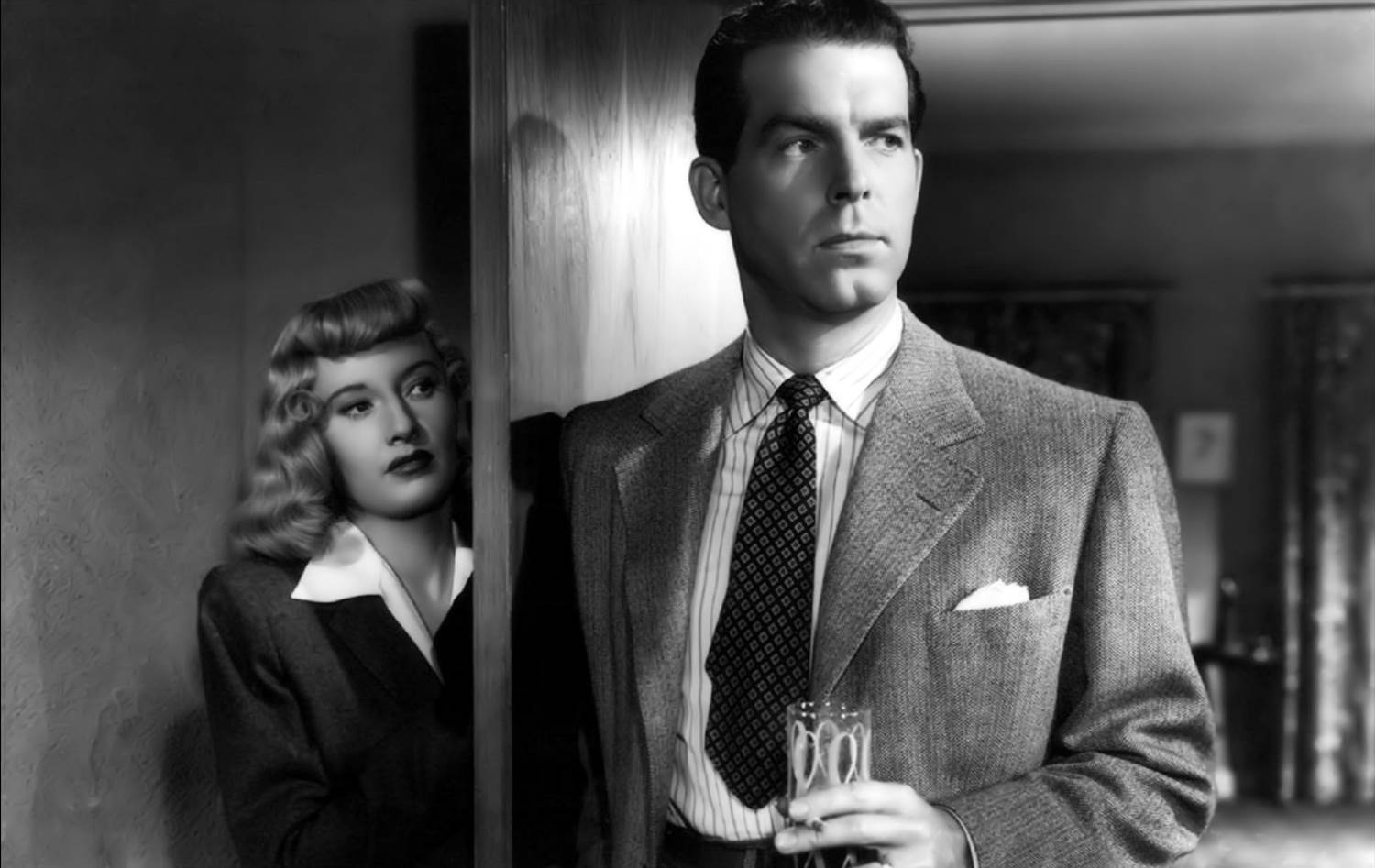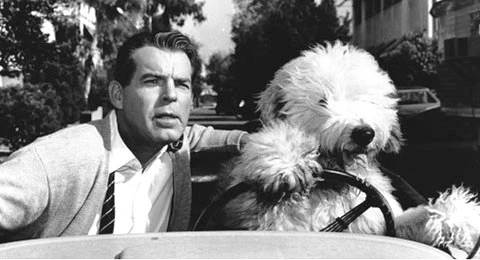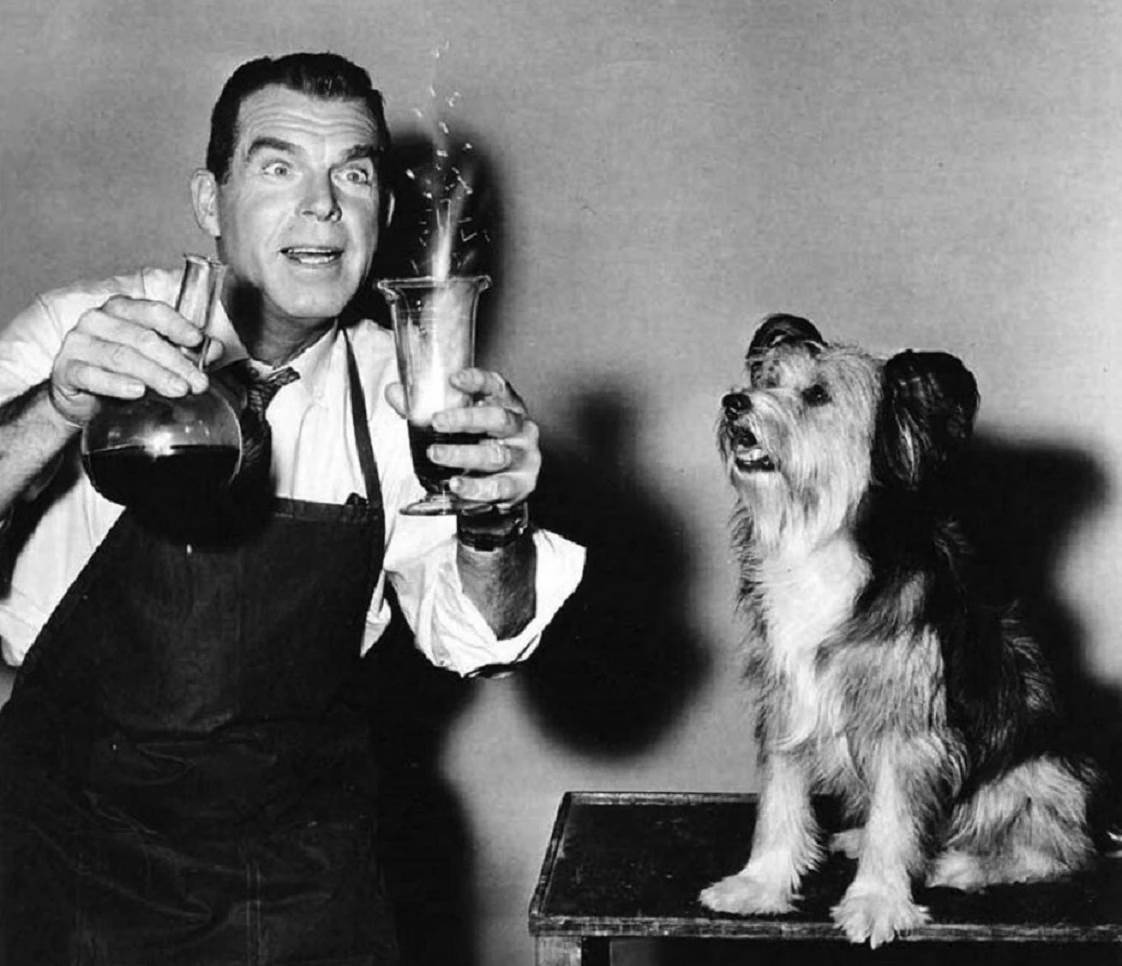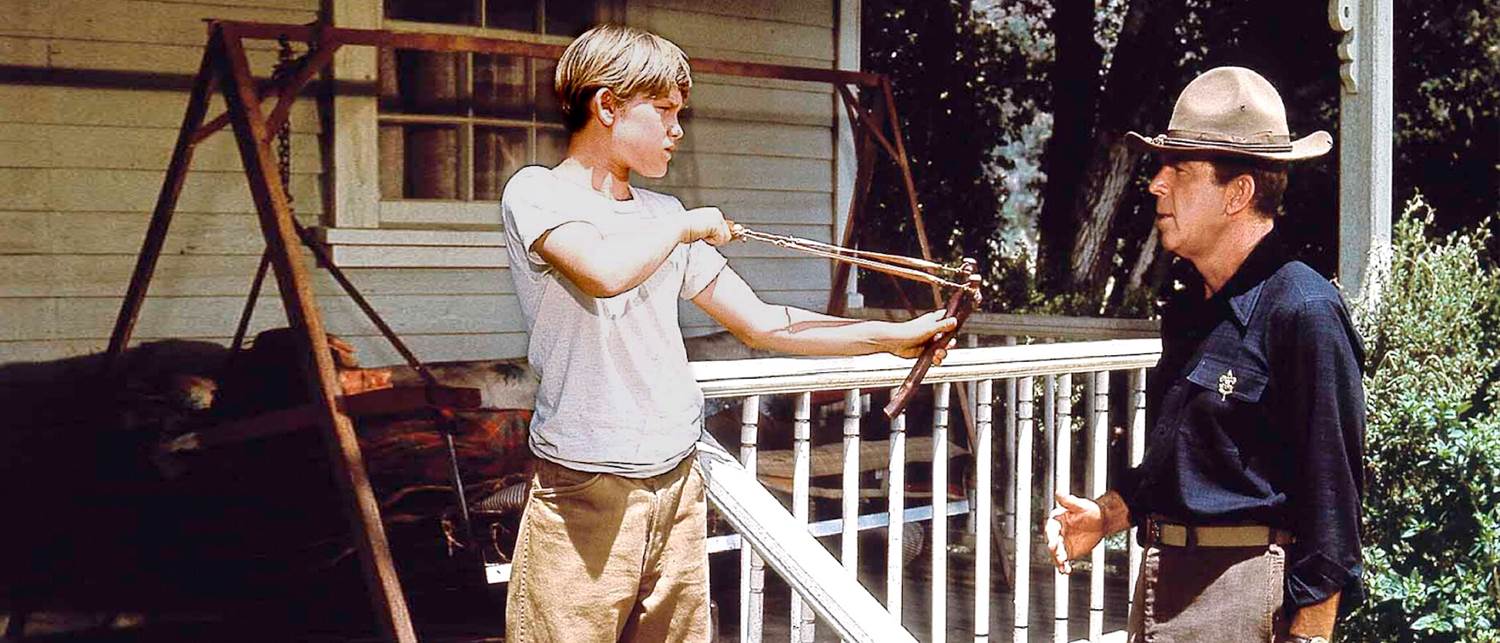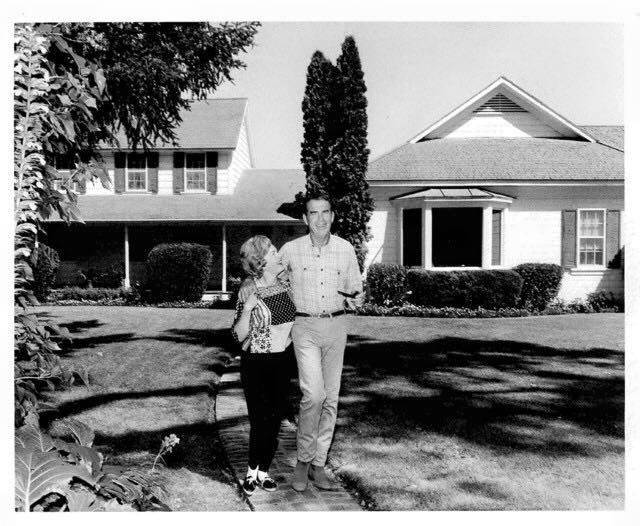The First Disney Legend: “Nice Guy” Fred MacMurray
If you were to craft a list of Hollywood performers who are both legendary and underrated, the list would likely be rather short. After all, legends are given that moniker for a reason - they are recognized for their outstanding achievements. But Fred MacMurray falls into a unique category of being both legendary yet also vastly underrated. His acting career spanned over 100 films and included one iconic television role, yet he has received shockingly few critical acknowledgments to match up to his commercial success.
Let’s shed a bit more light on the magnificent yet under-celebrated career of Fred MacMurray in this edition of Disney Legends Spotlight.
Image: Glasshouse Images
A Midwestern “Everyman" Making Good on a Dream
A native midwesterner, Fred was born in Illinois in 1908, but spent most of his time in Wisconsin. He attended Beaver Dam High School, where he played football, baseball, and basketball. Graduating with honors, he received a full scholarship to Carroll College in Waukesha, Wisconsin.
While in school, Fred picked up the saxophone, progressing to the point where he played in numerous local bands. He continued to play saxophone while attending the Chicago Art Institute, and eventually found his way into some musical success, joining Gus Arnheim and his Coconut Grove Orchestra with Bing Crosby as the lead vocalist.
Fred’s musical roots proved to be his gateway to Hollywood stardom. In the late 1920s, he moved to Los Angeles, where he joined a vocal ensemble called the California Collegians. The group traveled around, even reaching Broadway in New York. While with the Collegians, Fred had the opportunity to perform with Fred Allen in Three’s a Crowd, and as an understudy to Bob Hope’s Huckleberry Haines in Roberta. Thanks to their work in Roberta, Bob Hope and Fred MacMurray were both signed to seven-year contracts with Paramount Pictures.
Paramount’s Superstar
In the 1930s, Fred MacMurray got his first big break, starring alongside Claudette Colbert (the first of seven times the pair would perform together) in the 1935 romantic comedy The Gilded Lily. This story of a love triangle worked out in Fred’s favor. His character - newspaper reporter Peter Dawes - got his girl at the end of the film, and the role catapulted Fred to Hollywood stardom.
Image: Paramount
Also in 1935, Fred starred in the Oscar-nominated romantic comedy-drama Alice Adams. In the film, Fred played the wealthy Arthur Russell, opposite Katharine Hepburn’s lower-class Alice Adams, in what would be one of the finest performances of Hepburn’s distinguished career.
Still in 1935, Fred took his first turn at comedy in Hands Across the Table, co-starring comedian Carole Lombard. Both leading characters played gold-diggers looking to marry into money, but unwittingly (and hilariously) fall in love with each other instead. Fred would go on to star with Lombard in three additional films.
All told, Fred MacMurray appeared in over twenty films in the 1930s, including a remarkable seven in 1935 alone. While most of his early films were more lighthearted in nature, Fred spent considerable effort honing his craft, and was prepared to take the 1940s by storm.
Hollywood’s Leading Man
Throughout the 1940s, MacMurray continued rising through the ranks of Hollywood’s top actors, with his annual salary from films making him the highest-paid actor in Tinseltown, not to mention the fourth-highest-paid person in America.
Hit after hit continued with 1940’s Remember the Night - a holiday romance film teaming Fred with Barbara Stanwyck. In the film, Fred’s Assistant District Attorney John Sargeant wrestles with the ethics of his job of prosecuting shoplifter Lee Leander, who he sympathizes with (and falls in love with). Remember the Night is considered by many to be one of the most underrated holiday films of all time.
1941 saw a significantly different side of Fred MacMurray, when he reunited with Barbara Stanwyck in Double Indemnity - one of the greatest film noirs ever made. In the film, Fred’s usual nice-guy character Walter Neff is seduced into a murder plot by his client’s conniving wife Phyllis (Stanwyck) and gradually transforms into a cold-blooded killer. The film went on to earn seven Oscar nominations and has been regarded as one of the greatest films of all time, with Fred himself considering the film to be the best he ever made.
Image: Paramount
Back to lighter fare, Fred was at his friendly best in 1947’s fish-out-of-water comedy The Egg and I. The film - pairing Fred with Claudia Colbert once again - sees the whimsical newlywed Bob MacDonald purchase a chicken farm for his newlywed bride Betty - a city girl completely unfamiliar with the semantics of farm life. The romantic comedy was a huge hit, introducing the characters of Ma and Pa Kettle - a pair who would go on to be the subject of several spinoff films.
As the 1940s grew long and transitioned to the 1950s, Fred’s Hollywood began to wane. While the actor was still appearing in dozens of films, most were fairly standard fare, with a few standouts. But the 1950s ended on a high note for Fred, with an exceptional performance in the 1960 film The Apartment. Co-starring Shirley MacLaine and Jack Lemmon, the comedy-drama featured Fred as Jeff Sheldrake, a two-timing corporate executive - one of many in the film humorously conducting extramarital affairs in the apartment of an opportunistic insurance clerk (Lemmon). The film was nominated for ten Oscars, and won five, including Best Picture, Best Director, and Best Screenplay. Many consider the role of Jeff Sheldrake as Fred’s second best performance, behind his turn as Walter Neff in Double Indemnity.
Disney’s Live-Action Pioneer
As the 1950s wound down, Walt Disney came calling. Looking for some star power to jump-start the studio’s first live-action feature film, Walt called on Fred MacMurray to help blaze the trail, in what would be the first of seven collaborations between the two legends.
The Shaggy Dog (1959)
Image: Disney
In Disney’s first ever live-action film, Fred MacMurray plays “everyman" father Wilson Daniels, who is terribly allergic to dogs. This is comically unfortunate, since his son Wilby (Tommy Kirk) accidentally triggered an ancient curse and turned into a sheepdog. Wilby - while stuck being a dog - overhears spies plotting to steal a government secret. The Shaggy Dog proved to be a hugely successful commercial hit, bringing a new brand of live-action family comedies to Disney’s umbrella, full of slapstick laughs for kids, and more mature satire for adults. The film also started Fred on a new acting path - a silly, yet wise father figure.
The Absent-Minded Professor (1961)
Image: Disney
Fred’s second Disney film has proven to be the most beloved of all his entries into the Disney catalog. In The Absent-Minded Professor, Fred plays Professor Ned Brainard - a quirky scientist whose life gets turned upside down when he invents flying rubber, or “Flubber." With a zany plot that involves a corrupt businessman, government sales and secrets, and Brainard’s own wedding, the film was largely boosted by Oscar-nominated special effects including a flying Model T Ford and a leaping high school basketball team.
Bon Voyage! (1962)
On this honeymoon twenty years in the making, Harry Willard (Fred MacMurray) and Katie Willard (Jane Wyman) take a long-delayed cruise to Europe…accompanied by their three children. An unending comedy of errors ensues, turning the trip into a nightmare, yet still giving the family fond memories they will never forget. This is not one of Disney’s biggest film hits, but it still has plenty of magic, between Fred’s charming everyman and the title song written by Disney Legends Richard and Robert Sherman.
Son of Flubber (1963)
In the sequel to The Absent-Minded Professor, Fred’s Professor Brainard is once again hard at work in the lab. This time, he invents “Flubbergas" (the “son of Flubber"), which can control the weather. Similar hilarity ensues, with Brainard landing in trouble with both the government and his own wife. As far as sequels go, this film was incredibly successful, both critically and commercially, and kept Fred white hot in the Disney film market.
Follow Me, Boys! (1966)
Image: Disney
This heartwarming film stars Fred as Lem Siddons - a one-time aspiring lawyer who settles in a small-town and makes his mark on the community as a memorable Boy Scout leader. The film follows twenty years in Lem’s life, focusing on his impact on the scouts in his troop, as well as a romance with Vida Downey (Vera Miles). Despite some silly plotlines involving the U.S. military, the film was a commercial hit. Follow Me, Boys! is also quite notable for another reason - it was the first of several Disney films to feature Disney Legend Kurt Russell, in the role of a troubled youth who learns to better himself under the guidance of a caring role model.
The Happiest Millionaire (1967)
Image: Disney
The Happiest Millionaire holds the distinction of being the last live-action film produced by Walt Disney before his death in 1966. The musical - based on a true story - stars Fred MacMurray as Philadelphia millionaire Anthony Drexel Biddle - an eccentric millionaire with military ties, itching to get involved in World War I. Aside from the looming specter of war, the film’s emotional plot revolves around Biddle’s relationship with his daughter Cordy (Leslie Ann Warren). The film, featuring music by the Sherman Brothers, was intended to be the next Mary Poppins, but fell short of that goal. It did, however, deliver a sucker-punch to the gut of any parent who has had to let go of their little girl as she heads off into adulthood.
Charley and the Angel (1973)
Fred’s final Disney film is one of facing dire consequences. Fred’s lead character Charley Appleby is a hardware store owner with a strained relationship with his family. One day, an angel descends from heaven, informing him that his time on earth is limited. With a changed outlook on life, Charley adjusts his priorities to make amends with his family during the time he has left. The plot thickens when a criminal organization threatens Charley’s family and his town. In the end, Charley makes the ultimate sacrifice - saving his family by giving his own life. But his mysterious angel intervened, saving Charley from death and rewarding him with life and a much improved family relationship.
TV Dad for a Generation
Thanks in large part to his work with Disney, Fred MacMurray enjoyed a shift in his on-screen persona, from a “nice guy" leading man in countless romantic comedies, to that of an “everyman" who connected with his audience on a variety of social dynamics. The shift gave Fred’s career a second wind, and led to a new outlet for his acting career.
Beginning in 1960, Fred charmed a generation of fans with the long-running family-based television series My Three Sons. The family sitcom chronicles the life of widower (and aeronautical engineer) Steven Douglas, played by Fred, as he raises his three sons. Truth be told, it was often difficult to clearly tell the difference between Fred’s father in My Three Sons and those he played for Disney - in particular The Shaggy Dog’s Wilson Daniels. But there was no doubt Fred had carved a deep niche into the family film and television markets.
Image: CBS
My Three Sons was hugely popular, serving as a cornerstone of the ABC lineup from 1960 to 1964. The show seamlessly moved to CBS in 1965 when the network funded the conversion of the show from black-and-white to color. The feel-good sitcom ran for a total of twelve seasons, producing 380 episodes.
Up until My Three Sons, Fred had been hesitant to take on a predominant role in a television show. He deeply valued his personal time, and didn’t want to crowd his schedule with too much of a time commitment. But with his star power again sky high, Fred played hardball with his series contract. In addition to his generous salary, Fred arranged for the contract to be written so that all the scenes requiring his presence to be shot early on, and in a condensed schedule. This allowed him to work only 65 days per season on the show, giving him time to pursue further work in film, as well as enjoy his family, his Northern California ranch, and his favorite hobby - golf.
Business and Personal
Aside from being one of the most successful actors of his time, Fred MacMurray was also a sharp businessman, using his sizable film earnings to invest in real estate and other ventures. According to a 1944 story from The Kansas City Star, Fred bought his first apartment house “for a song" in 1936, and later sold it for a huge profit.
In 1941, Fred purchased land in the Russian River Valley in Northern California to establish MacMurray Ranch. His home-away-from-home, the ranch raised prize-winning Aberdeen Angus cattle, and cultivated prunes, apples, alfalfa, and other crops. He enjoyed the ranch on a personal level as well, indulging in activities like fly fishing, skeet shooting, and watercolor painting. Fred loved the ranch to the point where he wanted the property's agricultural heritage preserved. His wish was granted in 1996 - five years after his death in 1991 - when the ranch was sold to E. & J. Gallo Winery. The massive winemaker planted vineyards on the property, producing wines that bear the MacMurray Ranch label. One of Fred's children has continued to live on the property, remaining actively engaged in Sonoma's thriving wine community.
In 1944, after the smashing success of Double Indemnity, Fred purchased the Bryson Apartment Hotel, which had a long association with the crime/detective/film noir genre. He owned the building for several decades, and enjoyed the landmark’s occasional appearances in film, on television, and in books.
Aside from real estate, Fred was always looking for good business opportunities. His other ventures included frozen food storage lockers, owning a knitting mill in downtown Los Angeles, partial ownership in the California Country Club and Westside Tennis Club, and stock in oil wells.
Fred’s business savvy helped him in his acting career as well, where he famously wouldn’t make a film unless - in addition to a guarantee of salary - he was also given a share of the profits.
Fred MacMurray - An Accomplished Life
Fred’s acting career wound down in the 1970s, and he officially retired in 1978. He enjoyed thirteen years in retirement before passing away of pneumonia in 1991.
Considering Fred’s five-decade success in acting, it may come as a surprise that he was only nominated for one major award - a Golden Globe for Best Actor for The Absent-Minded Professor. It truly seems a ridiculous statistic, and has resulted in the prevailing opinion that Fred is considered one of the most underrated actors of the Golden Age of Hollywood. He held his own against some of Hollywood’s most talented leading ladies, including four films each with Barbara Stanwyck and Carole Lombard, and seven with Claudette Colbert, as well as films with Katharine Hepburn and Joan Crawford.
While the ultimate film honors may have eluded Fred, he did receive a star on the Hollywood Walk of Fame in 1960, for his contributions to motion pictures (before some of his best work was yet to come).
Image: Disney
Fred received the ultimate honor from Disney in 1987 when he was named the very first Disney Legend. In a group of Disney contributors now numbering over 300, Fred was the legend that started it all.
Thanks for spending some time with the ultimate Hollywood “nice guy" Fred MacMurray. Check out more Disney Legends in our spotlight collection.
Offer a comment or share this article with a friend by reaching out on social at: Instagram X
Sources:
D23 - Disney Legend Fred MacMurray



